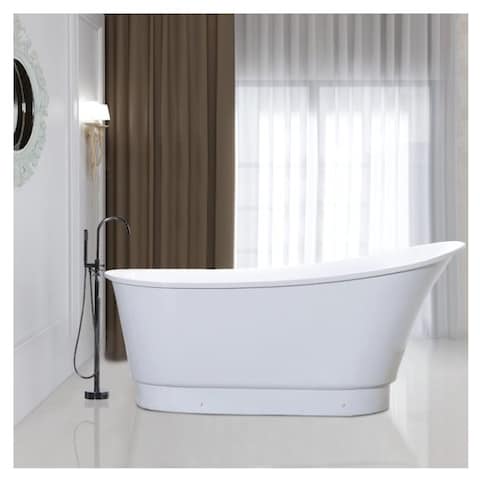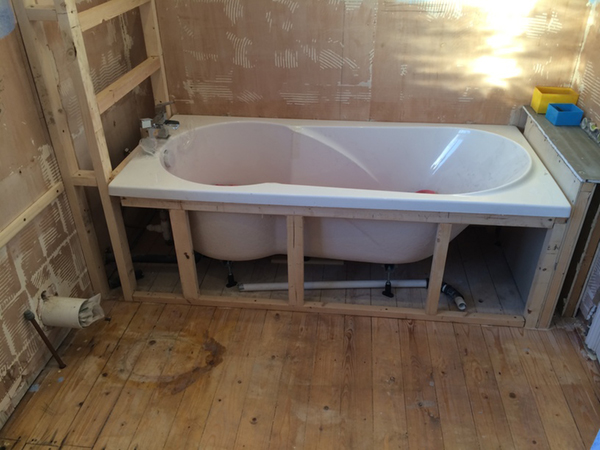Do It Yourself Bath Setup.
Do It Yourself Bath Setup.
Blog Article
In this article in the next paragraph you'll find additional reliable details related to Tools You Need to Install a New Bathtub .

Installing a bath tub isn't specifically brain surgery, however it does require strong plumbing, woodworking, as well as in some cases, tiling skills. Changing an old tub with a new one is also a reasonably hard job. If the old tub is readily obtainable, the task can move rapidly; if you have to open up a wall surface to eliminate the old tub and also place the new bathtub, the job is a lot harder. In either situation, the project is within a residence handyman's skills, although you will need a helper to move out the old tub and set in the brand-new one. Make sure you have actually certified on your own for the work as well as are comfortable trying it. Instead of hiring a contractor to take control of a halfway-completed project, it is far better to think about employing one prior to you start. Possibilities are you might need a professional plumber to make tube connections.
This article will certainly help you mount a new bathtub in your shower room if you have currently purchased a new bathtub and do not need to transform the arrangement of your previous water pipes.
Your tools as well as material list should make up the following:
Getting ready for the Installation
First of all, the supporting framework provided with the bath needs to be fitted (if needed) according to the supplier's directions. Next off, fit the taps or mixer to the tub. When suitable the tap block, it is necessary to ensure that if the faucet comes with a plastic washing machine, it is fitted in between the bath as well as the faucets. On a plastic bath, it is additionally sensible to fit a sustaining plate under the faucets unit to avoid pressure on the bathtub.
Fit the adaptable tap ports to the bottom of both faucets utilizing 2 nuts and also olives (sometimes supplied with the bathtub). Fit the plug-hole electrical outlet by smearing mastic filler round the sink outlet opening, and afterwards pass the outlet with the hole in the bathroom. Make use of the nut supplied by the producer to fit the plug-hole. Check out the plug-hole outlet for an inlet on the side for the overflow pipe.
Next off, fit completion of the flexible overflow pipe to the overflow electrical outlet. Afterwards, screw the pipe to the overflow face which ought to be fitted inside the bath. See to it you use every one of the provided washers.
Link the catch to the bottom of the waste electrical outlet on the bath tub by winding the string of the waste outlet with silicone mastic or PTFE tape, as well as screw on the catch to the electrical outlet. Connect all-time low of the overflow tube in a similar manner.The bathroom ought to currently be ready to be suited its final position.
Removing Old Touches
If you need to change old faucets with new ones as a part of your installment, then the first thing you should do is separate the water system. After doing so, turn on the faucets to drain any water continuing to be in the system. The process of getting rid of the existing faucets can be fairly troublesome as a result of the restricted accessibility that is frequently the instance.
Use a container wrench (crowsfoot spanner) or a tap device to reverse the nut that links the supply pipelines to the taps. Have a cloth ready for the staying water that will certainly originate from the pipelines. As soon as the supply pipelines have been removed, utilize the exact same device to loosen up the nut that holds the faucets onto the bath/basin. You will certainly require to quit the solitary taps from turning during this process. Once the taps have been eliminated, the holes in the bath/basin will have to be cleaned up of any type of old securing substance.
Prior to carrying on to fit the brand-new faucets, contrast the pipeline links on the old faucets to the brand-new faucets. If the old faucets are longer than the new faucets, after that a shank adapter is needed for the new taps to fit.
Setting up the Tub
Utilizing both wood boards under its feet, position the bathtub in the required position. The wooden boards are valuable in uniformly spreading out the weight of the bath tub over the location of the boards instead of focusing all the weight onto four small points.
The next goal is to guarantee that the bathtub is leveled all round. This can be achieved by examining the level as well as adjusting the feet on the bath tub up until the spirit level reads degree.
To set up taps, fit the bottom of the outermost versatile tap adapter to the proper supply pipe by making a compression join; after that do the exact same for the other faucet.
Turn on the supply of water and also examine all joints as well as new pipework for leakages as well as tighten them if necessary. Fill the bath tub as well as also check the overflow electrical outlet as well as the typical outlet for leakages.
Lastly, repair the bathroom paneling as explained in the manufacturer's user's manual. Tiling as well as securing around the tub should wait till the bathtub has actually been utilized at least when as this will settle it right into its final placement.
Fitting New Touches
If the tails of the new faucets are plastic, then you will certainly need a plastic adapter to avoid damages to the thread. One end of the adapter fits on the plastic tail of the tap and also the other end gives a connection to the existent supply pipes.
If you require to fit a monobloc, then you will certainly need lowering couplers, which links the 10mm pipeline of the monobloc to the standard 15mm supply pipeline.
Next, position the faucet in the installing opening in the bath/basin guaranteeing that the washing machines remain in location in between the tap as well as the sink. Secure the tap in position with the manufacturer supplied backnut. When the faucet is safely in place, the supply pipelines can be linked to the tails of the faucets. The taps can either be linked by using corrugated copper piping or with regular tap connectors. The previous type needs to be linked to the tap finishes first, tightening up only by hand. The supply pipelines can later be attached to the other end. Tighten up both ends with a spanner after both ends have actually been connected.
Tiling Around the Tub
In the area where the bathroom meets the floor tile, it is required to secure the joins with a silicone rubber caulking. This is important as the fitting can relocate enough to fracture a stiff seal, triggering the water to pass through the wall surface between the bath as well as the tiling, bring about complications with dampness as well as feasible leakages to the ceiling listed below.
You can choose from a range of coloured sealers to assimilate your components and fittings. They are offered in tubes as well as cartridges, as well as can securing gaps up to a width of 3mm (1/8 inch). If you have a larger space to load, you can load it with spins of soaked newspaper or soft rope. Remember to always fill up the tub with water prior to securing, to permit the activity experienced when the bathtub is in use. The sealer can fracture rather very early if you do not take into account this movement before sealing.
Alternatively, ceramic coving or quadrant tiles can be used to edge the bath or shower tray. Plastic strips of coving, which are easy to use and cut to size, are also easily available on the market. It is recommended to fit the ceramic tiles making use of waterproof or water-proof glue and also cement.
Bathtub Installation
How Important Is A Bathtub To Your Home?
High-quality baths, showers, and other bathroom updates are necessary when considering a smart investment in your home. It’s a room that you go to every day and one that is constantly being used by guests.The bathroom is one of the top trafficked rooms in a home and also one of the most valuable in terms of home resale.
Install Piping Before Tub
You will be using your existing drain and waste vent system, but pipes required include the hot and cold water supply lines and a pipe leading to a shower head. A mixing valve and shower head are also needed. Air chambers may be required.
Position the Tub
Lower the tub into place so that the continuous flange fits against the wall studs and rests on 1’x4' or 2’x4' supports. Anchor the tub to the enclosure with nails or screws inserted through the flanges into the studs.
NOTE: Remember, bathtubs and shower stalls may require support framing. A bathtub filled with water is extremely heavy, so check building codes and framing support before installing the tub.
Assemble Drain Connections
Assemble the bathtub drain connections by connecting the tub overflow with the tub drain above the trap, not beyond it. The trap will have a compression fitting that screws over the arm of the overflow assembly.
Place a Pipe For the Shower Head
First, locate a brass female threaded winged fitting and attach it to a framing support via a screw or a nail. Then run a pipe up the wall for the shower head. Sweat or solder the other side of the brass fitting to the top of the pipe.
Attaching Hot and Cold Water Lines
Attach your water lines for both hot and cold by sweating these directly into the hot and cold ports of the mixing valve. The mixing valve will be how water enters the tub’s system, not by the pipes themselves.
Install the Spout
Extend a piece of 1/2 inch pipe, or whichever length is specified in the manufacturer’s instructions, for the tub spout. Sweat on a male threaded fitting at the end of the pipe or use a brass nipple of the proper length and a 1/2 inch cap.
NOTE: At this point you should have your rough-in plumbing work inspected before proceeding further.
Check For Leaks
Restore the water pressure and check the drain connection and the supply pipes for any sign of leaking.
estore the Bathroom Wall
Replace the wall with moisture-resistant drywall as a base for your wall covering. Seal the joints between the wall and your new tub with silicone caulk as protection against water seepage.
https://www.berkeys.com/2016/12/02/bathtub-installation-dallas/

I have been very fascinated by How to Install a Bathtub: Install an Acrylic Tub and Tub Surround and I am praying you enjoyed reading the page. Are you aware of somebody who is interested by the niche? Take a moment to share it. Thanks a lot for your time. Kindly pay a visit to our blog back soon.
Information Here Report this page